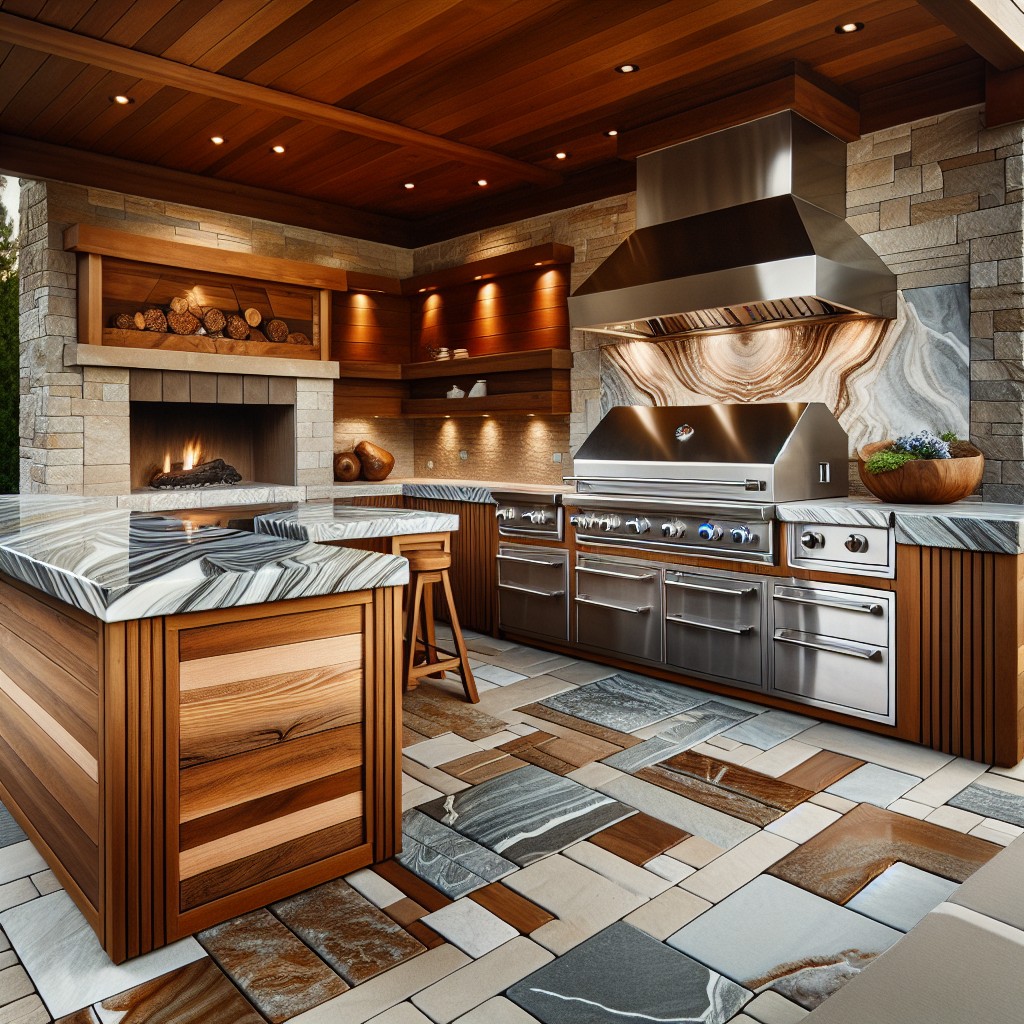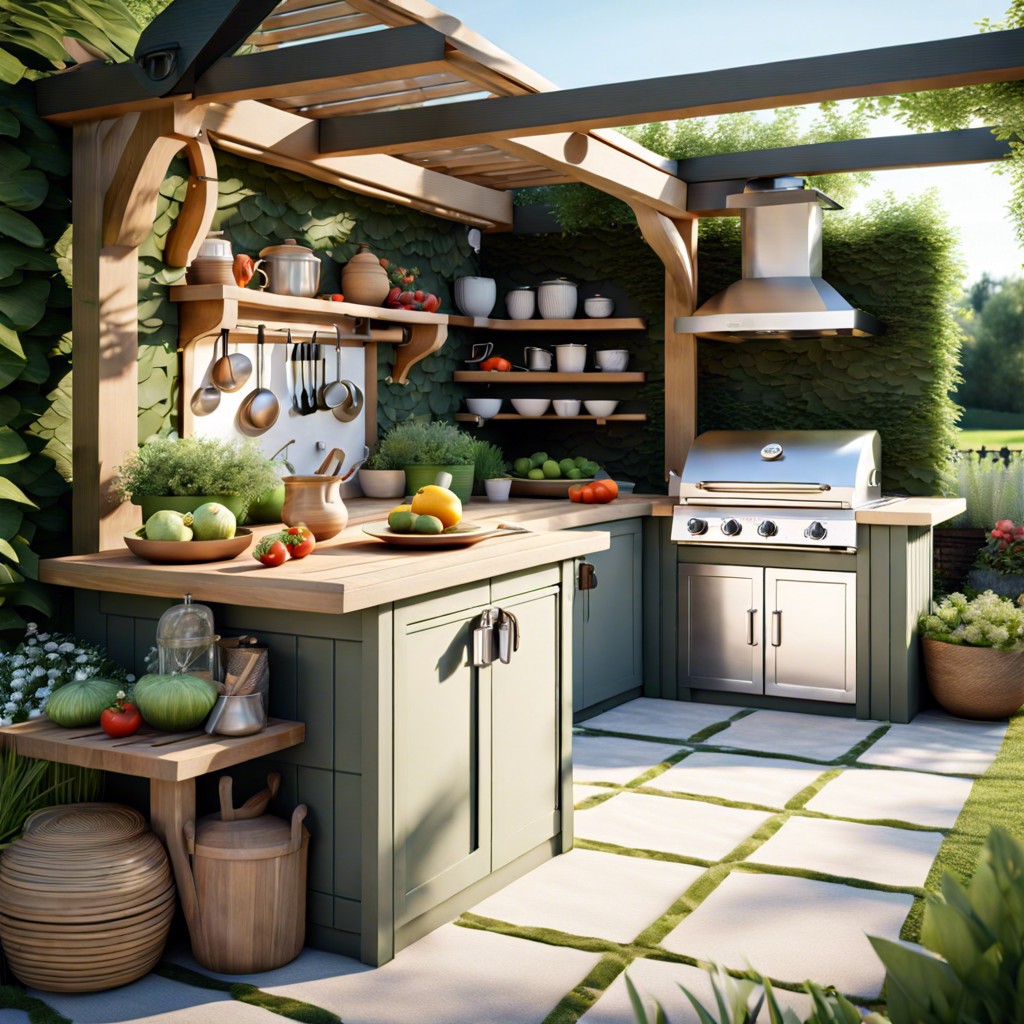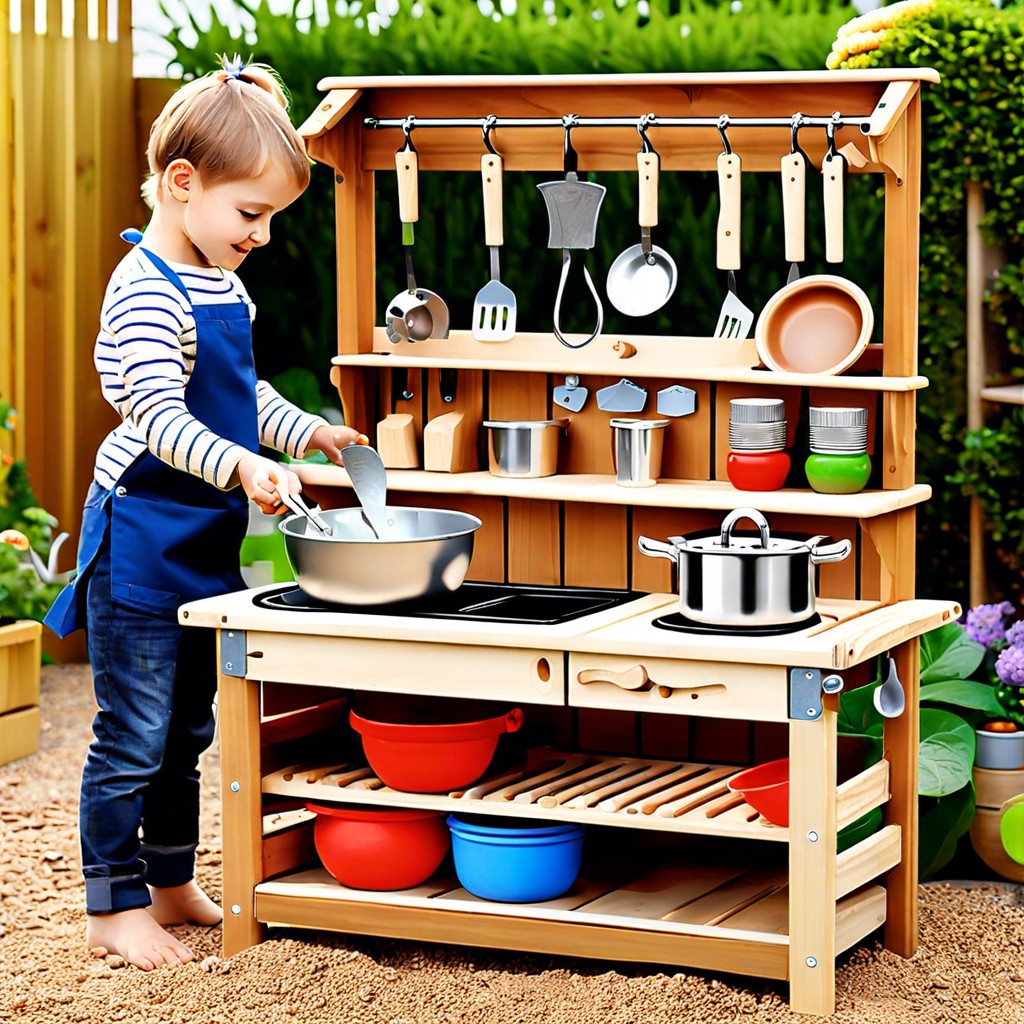Last updated on
Understanding the range of costs involved in creating an outdoor kitchen can help you plan your budget effectively and ensure you get the most value for your investment.
Key takeaways:
- Outdoor kitchens can range from ,000 to ,000 for basic setups.
- For a more luxurious outdoor kitchen, expect to spend ,000 to ,000.
- High-end outdoor kitchens can cost ,000 to ,000 or more.
- Options for financing an outdoor kitchen include savings, home equity loans, personal loans, credit cards, manufacturer financing, and home improvement grants.
- Factors that affect outdoor kitchen costs include materials, appliances, size/layout, utilities, permits, climatic considerations, and extra features.
What's Inside
Outdoor Kitchen Cost Estimates

When it comes to estimating the cost of an outdoor kitchen, several key factors come into play, which can range widely depending on preferences and priorities. Here’s a snapshot of what to consider:
Basic Build-Out: Beginning with the essentials, a simple outdoor kitchen with a good-quality grill, a small countertop, and durable outdoor cabinetry can be set up with around $2,000 to $10,000. This setup is practical for those who love occasional outdoor dining without requiring extensive amenities.
Mid-Range Mastery: For the culinary enthusiast, investing $10,000 to $25,000 allows the inclusion of additional appliances like a pizza oven, a more expansive countertop, premium grilling options, and perhaps a bar area. This range balances functionality with a touch of luxury.
High-End Haven: Culminating at the pinnacle of outdoor kitchen opulence, spending upwards of $25,000 to $50,000-plus can create a gastronome’s dream. This tier includes top-of-the-line appliances, custom construction with high-end materials, professional-grade equipment, and even smart technology integrations.
Remember, these ballpark figures serve as a guide. Personalizing an outdoor kitchen means costs fluctuate with the specifics of design choices, materials selected, and labor costs in your area. Even within the same budget range, two outdoor kitchens can look entirely different based on individual selections and priorities.
Outdoor Kitchen Costs By Tier
Understanding the range of outdoor kitchen costs can be manageable by dividing them into basic, moderate, and luxury tiers.
Basic Tier: Typically, ranges between $3,000 to $10,000. This tier often includes a simple grill, some counter space, and limited storage. These are often more compact units using less expensive materials and appliances.
Moderate Tier: Costs escalate to $10,000 to $25,000. This range includes additional features such as a premium grill, refrigeration, built-in seating, or a bar. Usually, this tier uses higher-quality materials like stainless steel or customized countertops.
Luxury Tier: At the top end, prices soar above $25,000 and can reach over $50,000. Luxury outdoor kitchens feature high-end appliances, full-service bars, pizza ovens, smoker, high-grade materials like granite or stone, and more expansive seating. They often cover large areas and can be customized down to the finest detail, reflecting a homeowner’s specific entertainment and cooking needs.
Remember, as you climb tiers, the complexity and size of the project typically increase, influencing the final cost significantly.
Ways to Pay for an Outdoor Kitchen
Financing an outdoor kitchen can be approached through various avenues, ensuring that your dream cooking space doesn’t remain a blueprint.
1. Savings: Utilize personal funds set aside for home improvement projects, which is often the most straightforward and interest-free method.
2. Home Equity Loans: Leverage the value of your property to borrow money at favorable interest rates, knowing that the investment might increase your home’s resale value.
3. Personal Loans: These unsecured loans are based on creditworthiness and don’t require collateral, making them a quick option, albeit often with higher interest rates.
4. Credit Cards: For smaller purchases or short-term financing, credit cards can be convenient, especially if you can take advantage of a zero-interest promotion.
5. Manufacturer Financing: Some outdoor kitchen equipment manufacturers offer financing plans for their products, which can simplify the process.
6. Home Improvement Grants: In certain situations or locales, there may be government or private grants available for home improvement that could apply to an outdoor kitchen build.
Considering these options can make an outdoor kitchen project feel less daunting financially, allowing for budget flexibility and smart planning.
Outdoor Kitchen Cost Considerations
When budgeting for an outdoor kitchen, consider the following elements which significantly influence the overall cost:
1. Materials: High-end materials like granite or stainless steel significantly raise costs compared to basic options like concrete or tile.
2. Appliances: The type and quality of appliances, from grills to refrigerators, can vary widely in price. Specialty appliances like pizza ovens or wine coolers add to the expense.
3. Size and Layout: Larger kitchens with complex designs cost more. The shape of your kitchen, whether it’s a straight run, L-shaped, or U-shaped, can affect the price due to varying material needs and labor.
4. Utilities: Running gas, water, and electricity to an outdoor kitchen requires professional installation and impacts your budget.
5. Permits: Depending on local regulations, permits may be needed for building or installing certain components, which adds to the cost.
6. Climatic Considerations: In colder climates, you may need to invest in weatherproofing and insulation to protect your investment.
7. Extra Features: Costs escalate as you add conveniences like seating areas, lighting, or a fire pit.
DIY Vs. Professional Installation
Tackling an outdoor kitchen project on your own can lead to significant savings. If you’re handy with tools and have basic construction knowledge, this might be the route for you. Consider the following:
1. Skill Level: Assess your skills honestly. Simple tasks like installing a grill or laying a patio might be within reach, but plumbing and electrical work often require a professional.
2. Time Investment: DIY projects consume time. Be realistic about the commitment. Weekends and evenings may quickly fill with project tasks over a period of several months.
3. Tools and Equipment: Do you have the necessary tools? Specialty equipment not commonly found in a household tool chest can drive up your costs.
4. Permits and Codes: Understanding local building codes and obtaining the right permits is crucial for safety and resale. Missing this step could mean redoing work or facing penalties.
5. Quality and Value: Professionally installed kitchens tend to offer greater longevity and may add more value to your home. Mistakes made during DIY installations can also lead to additional expenses.
Hiring a professional can offer peace of mind, especially for extensive projects. They bring:
1. Expertise: Contractors have the required skills and knowledge, often with a guarantee on workmanship.
2. Efficiency: Professionals can complete the project faster, with access to a team and resources that streamline the process.
3. Hassle-Free Experience: They manage the entire process, from permits and design to installation and clean-up.
4. Warranty and Service: Professionals often offer warranties for their work and are available for future service or adjustments.
Choosing between DIY and professional installation comes down to a balance of cost, time, skills, and the desire for a polished outcome. Assess these factors carefully to decide which approach suits your project and budget best.




